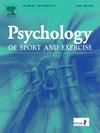教练是丹麦高性能运动环境的建筑师
IF 3.3
2区 心理学
Q2 HOSPITALITY, LEISURE, SPORT & TOURISM
引用次数: 0
摘要
优秀运动员在高绩效的运动环境中训练和竞争,这对他们的表现、发展和健康有显著影响。因此,在大量的任务组合中,教练的关键角色是设计、构建和维护成功的高性能环境的“架构师”。为了更深入地了解这一角色,我们进行了四个案例研究,在这些研究中,我们采访了丹麦奥林匹克和残奥会的一位高水平教练、他们的经理和两名运动员。每个案例首先使用反身性主题分析来确定关键主题。其次,在跨案例分析中,我们重点关注这四位教练如何开发和维护有利于最佳表现的环境,并精心设计了两个主要主题。“不可协商”指的是教练们所描述的非常重要的领导方式,这些方式从来没有被讨论过,包括通过价值观和清晰的结构来领导,领导整个人,领导全体员工。微妙的平衡是指教练在领导HPSE时必须解决的困境,包括平衡强度与可持续发展,个人与团队的考虑,专注于最好的与其他的,以及运动员的责任与教练的指导。该研究表明,高绩效教练作为运动员环境的建筑师发挥着关键作用,因此有助于理解现代教练的复杂性,强调了教练需要持续的专业发展,以提高他们在高绩效环境中的领导能力。本文章由计算机程序翻译,如有差异,请以英文原文为准。
The coach as an architect of Danish high- performance sport environments
Elite athletes train and compete within high-performance sport environments that significantly influence their performance, development, and well-being. Within an enormous portfolio of tasks, a key role of a coach, therefore, is that of an ‘architect’ who designs, builds, and maintains successful high-performance environments. To understand this role in more depth, we conducted four case studies in which we interviewed one high-level coach in Danish Olympic and Paralympic sport, their manager, and two of their athletes. Each case was first analyzed using reflexive thematic analysis to identify key themes. Second, in a cross-case analysis focusing on how these four coaches develop and maintain environments conducive to top performance, we crafted two overarching themes. Non-negotiables refer to ways of leading that coaches described as so essential that they were never up for discussion, and included leading through values and clear structures, leading whole persons, and leading the whole staff. Delicate balances refer to dilemmas that coaches had to navigate when leading their HPSE, including balancing intensity with sustainable development, individual consideration with the team, a focus on the best with a focus on the rest, and athlete responsibility with coach guidance. The study illustrates that high-performance coaches play a critical role as architects of their athletes' environments and thus contributes to the understanding of the complexity of modern coaching, highlighting a need for ongoing professional development for coaches to enhance their leadership competencies in high-performance settings.
求助全文
通过发布文献求助,成功后即可免费获取论文全文。
去求助
来源期刊
CiteScore
6.40
自引率
5.90%
发文量
172
审稿时长
69 days
期刊介绍:
Psychology of Sport and Exercise is an international forum for scholarly reports in the psychology of sport and exercise, broadly defined. The journal is open to the use of diverse methodological approaches. Manuscripts that will be considered for publication will present results from high quality empirical research, systematic reviews, meta-analyses, commentaries concerning already published PSE papers or topics of general interest for PSE readers, protocol papers for trials, and reports of professional practice (which will need to demonstrate academic rigour and go beyond mere description). The CONSORT guidelines consort-statement need to be followed for protocol papers for trials; authors should present a flow diagramme and attach with their cover letter the CONSORT checklist. For meta-analysis, the PRISMA prisma-statement guidelines should be followed; authors should present a flow diagramme and attach with their cover letter the PRISMA checklist. For systematic reviews it is recommended that the PRISMA guidelines are followed, although it is not compulsory. Authors interested in submitting replications of published studies need to contact the Editors-in-Chief before they start their replication. We are not interested in manuscripts that aim to test the psychometric properties of an existing scale from English to another language, unless new validation methods are used which address previously unanswered research questions.

 求助内容:
求助内容: 应助结果提醒方式:
应助结果提醒方式:


